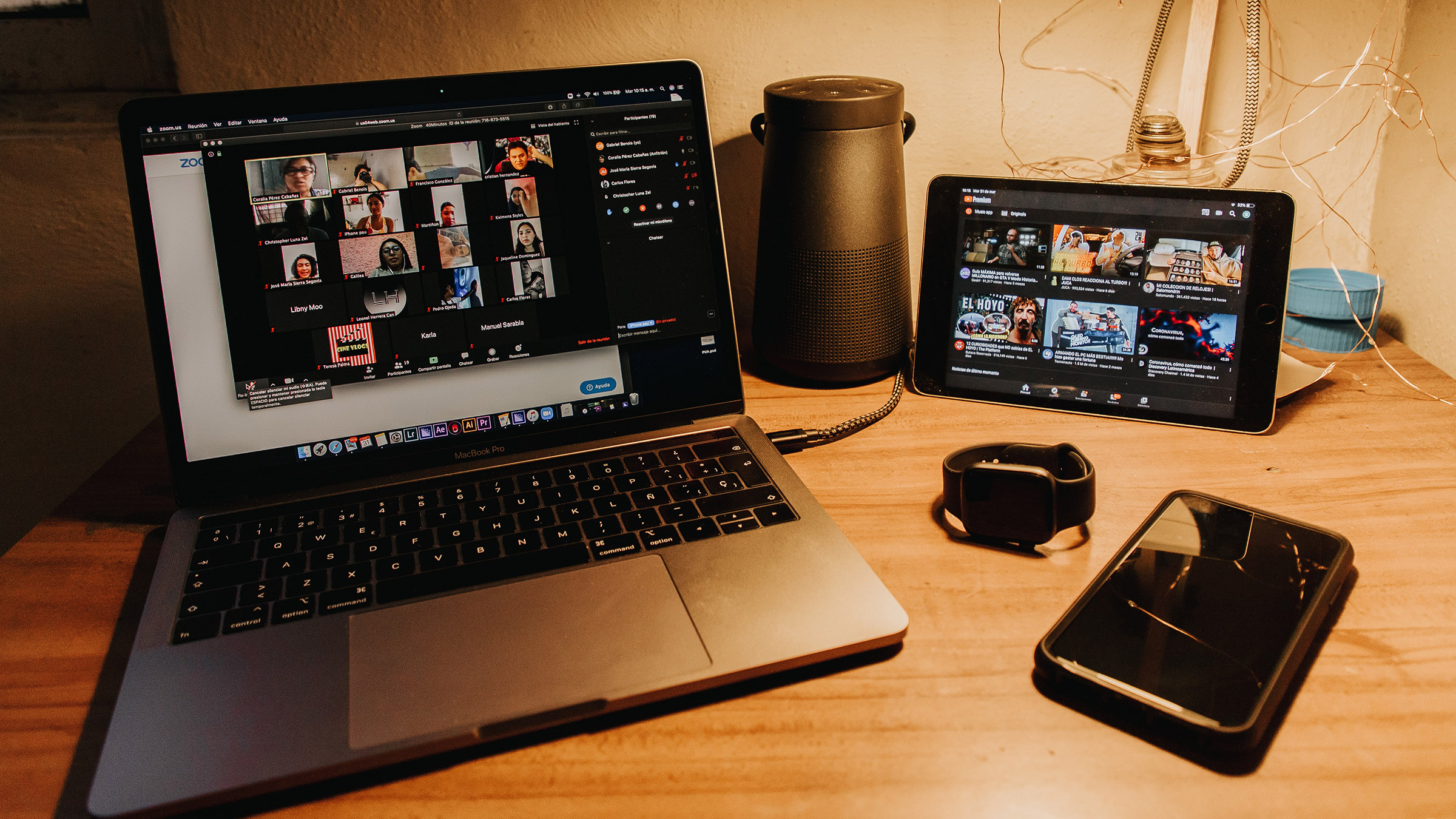A lot of things have changed about TV in the past decade. Where once, we would all make appointments to catch the latest episodes of a show, or at least schedule a DVR recording, we now consume most ‘television’ content on our own schedule. Of course, traditional linear channels still enjoy large nightly audiences for those who simply can’t wait to catch up, but the rise of on-demand streaming services has supplied the modern viewer with a number of different ways to enjoy their favourite shows.
Some traditionalists have argued that this takes away from the communal nature of watching exciting series finales with a group of friends or family. If everyone’s tuning in at different times, you can’t text a buddy to say “Did you see that?” or “I can’t believe that happened!” But wait – maybe the classic experience isn’t dead after all. As it often does, the internet has found something of a solution: the watch-along.
Whether it’s sport, scripted dramas, reality shows or anything else on the small screen, there is a growing trend for companion shows or social media threads where you can watch episodes alongside other viewers who are not physically present, and even listen to or read their reactions. There have also been a growing number of features on streaming apps where people can arrange to simultaneously start a show at the same time, and share reactions either by camera or chat.
The watch-along seeks to fill the void left by the communal viewing experience, where everyone might watch an episode of the latest hit show and be equipped to talk about it the next day. Just as Zoom meetings have changed the way we work, and video calling the way we connect, the watch-along uses advances in technology to make our way of living a little bit easier.
Trailer Trends
The watch-along can take many forms; for instance you can participate in a watch-along while you’re watching the episode for the first time, or afterwards, so you can concentrate on the other person watching. Once upon a time, you had to go to a cinema to get the latest trailer for upcoming blockbusters, or wait for an ad break to see a promo for an upcoming show. Now, once you have watched the hot new preview a few times, you can watch it with someone else as well. Trailer reaction videos are a staple of YouTube, with many channel owners finding fame for their often animated takes on the latest and greatest clips for TV and film.
This seems like a natural fit for the format, as trailers are meant to get us excited about an upcoming episode or film, but we tend to watch them on our own via a phone or computer. To view the reaction videos, which often have the trailer in the corner, allows us to share our excitement in a one-sided way by seeing someone else get excited. Certain reaction videos in the past have even reached the eyes of the creators – British Youtuber Emma Clark, who goes by the username NuttyMadam, posted a Twilight trailer reaction in 2011 that hit the headlines for her emotional reaction, eventually prompting a comment from Robert Pattinson himself.
The videos have become so commonplace that, recently, Ryan Reynolds lampooned the trend for his own film Free Guy, playing his most famous character, Deadpool, as he ‘reacts’ to the trailer alongside Marvel character Korg, played by New Zealand filmmaker and co-star Taika Waititi. While obviously a spoof of the genre and a tongue-in-cheek marketing exercise, it shows how much of a part of the moviegoing landscape these videos have become.
TV Talk
Where the watch-along has proven most useful, however, is for TV shows, particularly during the last few years as we have witnessed a boom in scripted series that get everyone talking. Prestige dramas like Game of Thrones, The Crown, The Mandalorian and Narcos have captured audiences not just in a particular city or nation, but across the entire world, with catch-up TV and streaming services allowing everyone to see the latest twists and turns on their own schedule.
While some say the communal experience of live television has waned, the digital watercooler has only grown bigger. A certain etiquette has evolved around watching TV, demanding that we don’t spoil it for others and calling upon us to wait until our friends have watched the latest episode of a show before we share our thoughts.
And in certain ways, the communal experience hasn’t died off, it has simply changed: the Burlington Bar reaction videos, for instance, began trending online a couple of years ago, with videos of a bar in Chicago where fans would get together to watch big shows, and react together as one would at a big sporting event.
In our homes, we can also have a much wider audience watching along with us. Live virtual watch parties happen all over the internet and can take place before or after a show airs – similar to the way sports programmes have pre- and post-game analysis – or simply offer an audience to react along with you. It really depends on the type of show: you likely wouldn’t want someone talking over the latest revelations of an HBO drama, but perhaps that isn’t quite so important for a popular reality show which lends itself to mid-show discussion. Pop culture outlets often host their own watch-along parties, with familiar writers and commentators pitching their ideas for what might happen, then reacting to what eventually unfolds. It’s a great way for fans to digest the story along with people who can eloquently break down their own thoughts.
Sometimes, however, you just want to share with a fan. Many YouTubers host watch-along streams that allow an enthusiast to respond with other enthusiasts. It’s a more homemade approach, but at the same time slightly more authentic than a studio. Channel owners like Supes on YouTube host live watch parties for streaming events like the recent explosive finale of Disney+’s Loki, putting a timecode above so viewers present and future can sync up with him, while live viewers type their thoughts into the chat at the side. Why watch alone when you can be around hundreds of thousands of fans all enjoying the show together?
Private Party
Sometimes you don’t need experts or creators to watch along with. For many, simply connecting with the people they care about is the most important part of sharing their entertainment experience. Most of the big streaming apps around the world have (or are working on) features that let users sync up with other people around the world, and watch shows at the same time while discussing in a chat room or over video call. Meanwhile, third-party sites like Teleparty and Scener allow people to line up their accounts and have a shared space for discussion together.
The beauty of this more personal approach is that it is not reliant on any particular software. You can hold a ‘meeting’ on video conferencing sites like Zoom, or just have a group video call if you want to be connected with each other when the big moments happen. This has worked particularly well for houses where a second or third screen is more common. If you’re already chatting to friends on your phone while a show is playing, why not all be chatting about the same thing? It’s also proved very convenient for shows that air during the week, where a big meet-up might not be possible for those working or attending school.
For the more tech savvy, there’s a way to move within a virtual space with friends. Bigscreen, a platform that runs on virtual reality headsets, provides a number of options for watching films and TV shows on your own or as part of a group. Once choosing your avatar, the app’s watch party feature allows you to host screenings with friends, or take part in virtual theatres that run round-the-clock episodes of old favourites like Star Trek, Comedy Central stand-up, and cult artist Bob Ross.
Press ‘Play’ Together, Stay Together
Most of all, however, digital watch-alongs have helped us connect at a time when we needed people around us more than ever. The beginning of the 2020s has seen people around the world kept away from those they love for long periods of time, and most often the things that we miss can be small, like a work commute, the atmosphere in a classroom, or having friends come over to watch TV. Social media and technology have been able to fill those spaces, offering meaningful connection for people who can’t meet up physically. For others, it’s about finding your tribe, learning that there are people out there who love the characters and shows that you love, and being able to immerse yourself in that fandom.
Wherever there is a need for a group of people, large or small, to get together and enjoy the small screen, watch-along events can add an extra dimension to the experience, making even the most pedestrian episodes feel like a huge event – and it’s only getting better. It is in the interest of all the major entertainment producers to make their platforms a bigger part of our lives, meaning that watching a show with a friend on the other side of the world could soon be as easy as pressing play.














Sorry, the comment form is closed at this time.